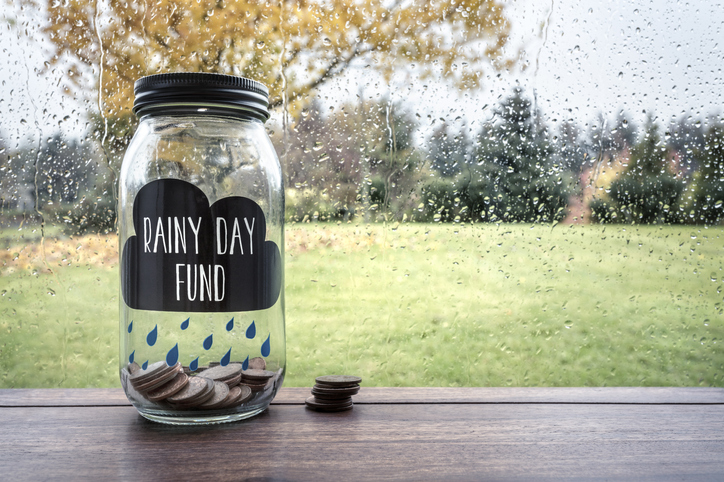Everyone can benefit from a rainy day fund. Whether you’re a student with a part-time job or a graduate student repairing for life after college, learning why and how to start an emergency fund can provide peace of mind while helping you achieve your financial goals.
What is a rainy day fund?
A rainy day fund is an amount of money you set aside to pay for minor unexpected expenses. It’s similar to an emergency fund, but the latter is generally a larger amount to cover costs incurred because of severe damage to your car (such as almost or completely totaling it), trips to the emergency room, or other big expenses.
The biggest difference between an emergency fund vs. saving for a rainy day is the dollar amount. Emergency funds typically equate to three to six months of living expenses, while rainy day funds contain enough money to cover more minor (but still expensive) purchases.
Avoid High-Interest Borrowing
Anyone who’s ever listened to money expert Dave Ramsey’s radio show or podcast understands why you need a rainy day fund. One major reason is to avoid paying interest to a credit card company or taking out a loan at your bank. Having a rainy day fund can save you thousands in interest over time.
Gain Peace of Mind
More than ever, most of us are realizing that you never know what life has in store for you. Whether it would cost more to repair your laptop than replace it or your car’s tires won’t survive another winter, having a cash reserve can help you weather a range of minor emergencies.
It can even cover vital expenses like pet care or medical expenses. Knowing you’ll be able to pay for unplanned costs helps keep stress at bay.
How to Start a Rainy Day Fund
Of course, the more you can put in your rainy day fund, the better. Even if you only have $10 to set aside, it’s a start. Stashing away small amounts can help you build your fund in a surprisingly short amount of time. Try these tips to fast-track your fund:
- Figure out where to put your emergency fund
- Put your change in a jar at the end of every day
- Take on a side gig solely for your rainy day fund
Ask yourself, “What is a rainy day fund goal that will take care of my needs?” Shoot for that amount, but don’t hesitate to keep going once you reach it.
Where to Put a Rainy Day Fund
Don’t look at your emergency fund as an investment; consider it as a source of cash that’s easily accessible when you really need it. If you want to make money on your rainy day fund, though, here are some options:
- Certificate of deposit
- No-fee checking account
- High-interest savings account
Checking and savings accounts are ideal for most savers. These accounts offer instant access to your money as well as convenience in the form of ATM cards and peer-to-peer payments.
Certificates of deposit, or CDs, aren’t as easily accessible but let you earn more interest while you save. Check with your bank to see if early withdrawal fees apply.
Save for Your Rainy Day with Varsity
From knowing how to start an emergency fund to understanding why you need one in the first place, we hope you’re inspired to start saving. Varsity offers all the tools you need to protect your money against emergency expenses. Open a savings account today to put your mind at ease and gain access to a wide range of financial products.




